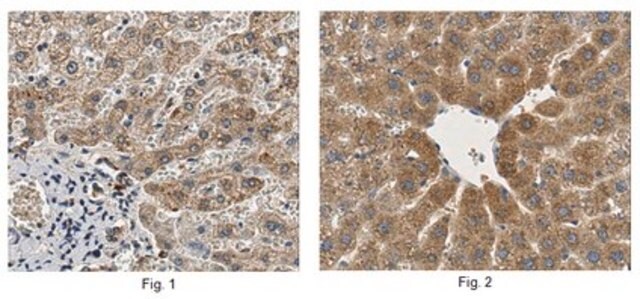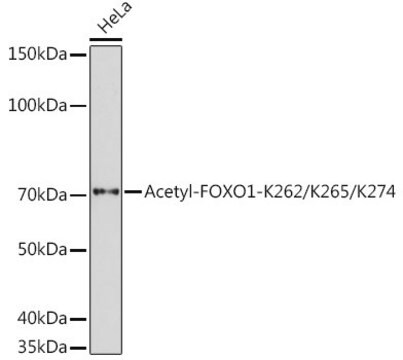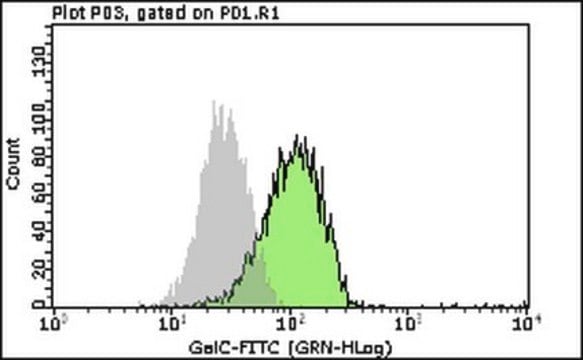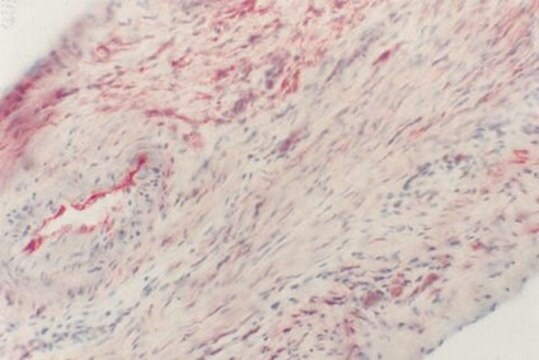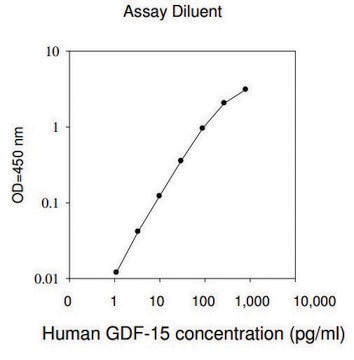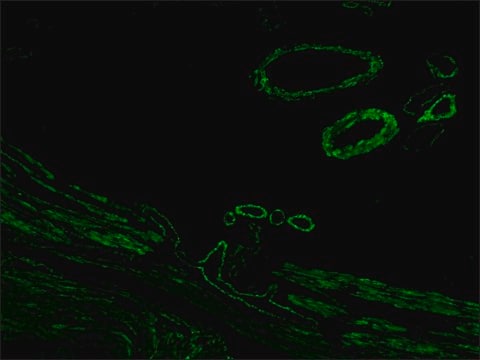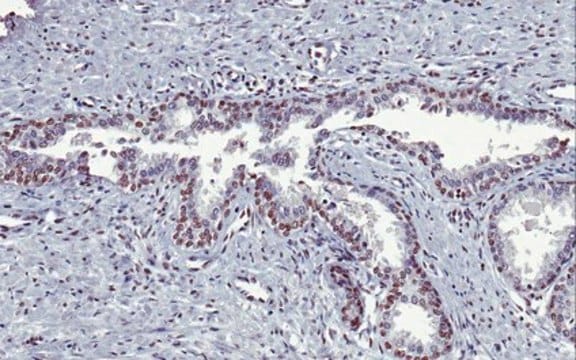AP192B
Donkey Anti-Mouse IgG Antibody, biotin conjugate, Species Adsorbed
0.8 mg/mL (after reconstitution), Chemicon®
Sign Into View Organizational & Contract Pricing
All Photos(1)
About This Item
UNSPSC Code:
12352203
eCl@ss:
32160702
NACRES:
NA.46
Recommended Products
biological source
donkey
Quality Level
conjugate
biotin conjugate
antibody form
F(ab′)2 fragment of affinity isolated antibody
antibody product type
secondary antibodies
clone
polyclonal
species reactivity
mouse
manufacturer/tradename
Chemicon®
concentration
0.8 mg/mL (after reconstitution)
technique(s)
ELISA: suitable
western blot: suitable
shipped in
wet ice
target post-translational modification
unmodified
Related Categories
General description
Immunoglobulin G (IgG), is one of the most abundant proteins in human serum with normal levels between 8-17 mg/mL in adult blood. IgG is important for our defence against microorganisms and the molecules are produced by B lymphocytes as a part of our adaptive immune response. The IgG molecule has two separate functions; to bind to the pathogen that elicited the response and to recruit other cells and molecules to destroy the antigen. The variability of the IgG pool is generated by somatic recombination and the number of specificities in an individual at a given time point is estimated to be 1011 variants.
Specificity
Specific for mouse IgG, heavy and light chain.
Application
Donkey anti-Mouse IgG Antibody, biotin conjugate, Species Adsorbed detects level of Donkey Mouse IgG & has been published & validated for use in ELISA & WB.
EIA and Western blots: 1:5,000-1:100,000.
Immunohistochemistry: 1:500-1:5,000.
Optimal working dilutions must be determined by end user.
Immunohistochemistry: 1:500-1:5,000.
Optimal working dilutions must be determined by end user.
Research Category
Secondary & Control Antibodies
Secondary & Control Antibodies
Research Sub Category
Secondary Antibodies Adsorbed for Dual Labeling
Secondary Antibodies Adsorbed for Dual Labeling
Physical form
Immunoaffinity Purified and Immunodepletion
Lyophilized. Buffer = 0.01 M Sodium Phosphate, 0.25M NaCl, pH 7.6 with 15 mg/mL BSA and 0.01% thimerosal.
RECONSTITUTION:
Reconstitute with 500 μL of sterile distilled water.
RECONSTITUTION:
Reconstitute with 500 μL of sterile distilled water.
Storage and Stability
Maintain lyophilized product at 2–8°C for up to 12 months. After reconstitution the product is stable for several weeks at 2–8°C as an undiluted liquid. For extended storage after reconstitution, add an equal volume of glycerol to make a final concentration of 50% glycerol followed by storage at -20°C in undiluted aliquots for up to 12 months. Please note the concentration of protein (and buffer salts) will decrease to one-half of the original after the addition of glycerol. Avoid repeated freeze/thaw cycles.
Legal Information
CHEMICON is a registered trademark of Merck KGaA, Darmstadt, Germany
Disclaimer
Unless otherwise stated in our catalog or other company documentation accompanying the product(s), our products are intended for research use only and are not to be used for any other purpose, which includes but is not limited to, unauthorized commercial uses, in vitro diagnostic uses, ex vivo or in vivo therapeutic uses or any type of consumption or application to humans or animals.
Not finding the right product?
Try our Product Selector Tool.
Storage Class Code
11 - Combustible Solids
WGK
WGK 3
Certificates of Analysis (COA)
Search for Certificates of Analysis (COA) by entering the products Lot/Batch Number. Lot and Batch Numbers can be found on a product’s label following the words ‘Lot’ or ‘Batch’.
Already Own This Product?
Find documentation for the products that you have recently purchased in the Document Library.
Yoshiko Honda et al.
Frontiers in neural circuits, 13, 45-45 (2019-07-30)
The presubiculum plays a key role in processing and integrating spatial and head-directional information. Layer III neurons of the presubiculum provide strong projections to the superficial layers of the medial entorhinal cortex (MEC) in the rat. Our previous study revealed
Jing-Shan Lu et al.
Molecular pain, 12, 1744806916684515-1744806916684515 (2016-01-01)
The anterior cingulate cortex (ACC) is a key brain region for the perception of pain and emotion. Cellular and molecular mechanisms of the ACC are usually investigated in rodents such as mice and rats. Studies of synaptic mechanisms in primates
Eriko Kuramoto et al.
The European journal of neuroscience, 33(1), 95-109 (2010-11-16)
Motor thalamic nuclei, ventral anterior (VA), ventral lateral (VL) and ventral medial (VM) nuclei, receive massive glutamatergic and GABAergic afferents from the cerebellum and basal ganglia, respectively. In the present study, these afferents were characterized with immunoreactivities for glutamic acid
Takaki Yahiro et al.
Scientific reports, 7(1), 5031-5031 (2017-07-12)
Thermoregulatory behaviour, such as migration to a comfortable thermal environment, is a representative innate animal behaviour and facilitates effective autonomic regulation of body temperature with a reduced cost of resources. Here we determine the central thermosensory ascending pathway that transmits
Eriko Kuramoto et al.
Frontiers in aging neuroscience, 14, 935033-935033 (2022-08-20)
The rapid aging of the population makes the detection and prevention of frailty increasingly important. Oral frailty has been proposed as a novel frailty phenotype and is defined as a decrease in oral function coexisting with a decline in cognitive
Our team of scientists has experience in all areas of research including Life Science, Material Science, Chemical Synthesis, Chromatography, Analytical and many others.
Contact Technical Service